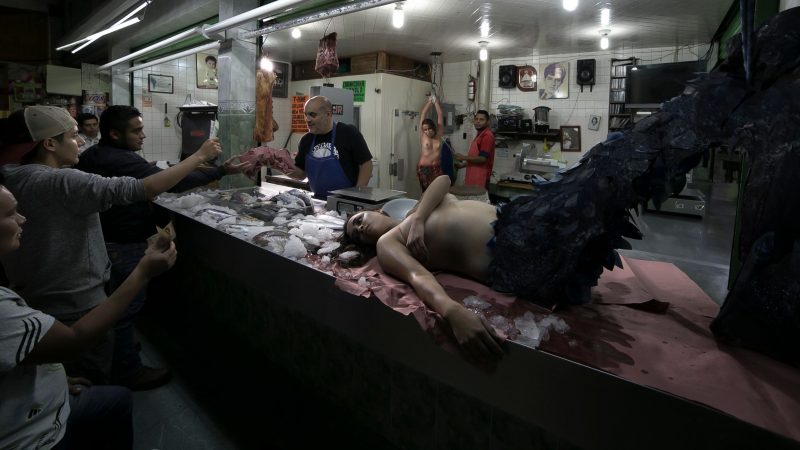
Absence, Siren Project, shown with permission.
In Mexico, 10 women are murdered [1] each day. Feminist organizations and artists denounce [2] this violence, which occurs at home as well as in the streets, and the lack of political response. From his work the Siren Project, the photography of Pablo Tonatiuh Álvarez Reyes wants to give a metaphorical look at the killings to awaken some Mexicans from the numbness they feel amid the press releases, unfortunately repetitive in their morbidity.
Álvarez Reyes chose the metaphor of the mermaid in his photography series because this mythological being “has had a sexist representation in paintings throughout much of art history,” as he told Global Voices by email. “It is related to sexual temptation, which men must avoid in order to continue on their way, so to speak, they are seen primarily in relation to man, without considering their own morals or temptations.”
To this sexist representation, he wanted to give a new, symbolic meaning. In this series, “they are victims of a system that sells, buys, confines, and kills them, considering them inferior beings, subject to the will of others.”

Siren meat 1, Siren Project, shown with permission.
And although the Siren Project is geared toward a diverse audience, Álvarez Reyes adds that he “is interested in creating a dialogue with men, since it is vital that men take an active and critical role in the fight against the systematization that perpetuates violence against women.”
Álvarez Reyes’ photos, thirteen in total, feature a series of fish-women in different dehumanizing situations. Many can be difficult to look at, since it highlights the vulnerability of women and, according to the artist's vision, the way they are seen in Mexican society — as meat.
The photos have the distinct characteristic of showing the models half-naked, which begs the question of why women are shown in this form, as some could see this as a masculine perspective of the subject. Álvarez Reyes responds that he wanted to be faithful to the image of the siren, who is half-human, half fish, to avoid a link with the romanticized images of sirens in pop culture, and to show that the abused people are real women.

Charal Siren, Siren Project, shown with permission.
As for the question of why he put the sirens in suggestive, vulnerable, or gory poses, Álvarez Reyes responds that he employs the suggestive “to highlight that many violent acts are of a sexual nature.” By showing extremely violent situations in the photos, he aims to highlight the indifference of society.
For example, in the photo “Anatomy Class,” “the dead mermaid is observed as if she were treated like a frog in a school laboratory, having no interest in speaking with her in life, to face and recognize her individuality. Among several possibilities, it is criticism of a judicial system and a press that presents women killed by femicide as numbers or statistics, offering fruitless ‘solutions’ to the problem of violence that does not pretend to understand the origin and causes of it.”
The majority of participants are not models, but rather women from different places, ages, and occupations who empathize with the fight against violence towards women.

Trophy, Siren Project, show with permission.
At the moment, the work is not presented in an exhibition due to the COVID-19 lockdown. His initial plan was to go on tour through middle and high schools, but now he's thinking of putting together a book with the thirteen photos and what went on behind-the-scenes, in order to show how the project had been developed, together with pertinent information about femicide and violence.
What the photographer wants most from this work can be summed up in a word: dialogue. He wants to encourage “a dialogue that tears us away from the indifference” and “that upon seeing the photos people want to enter into a conversation in front of the work.”
“We want to move the viewers so that they reflect on the causes and origins of violence against women, and how different harmful practices lead, ultimately, to femicide,” he said.